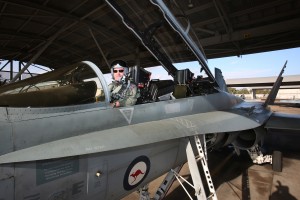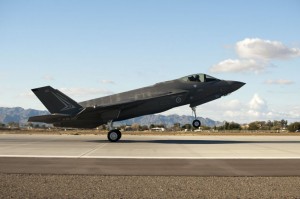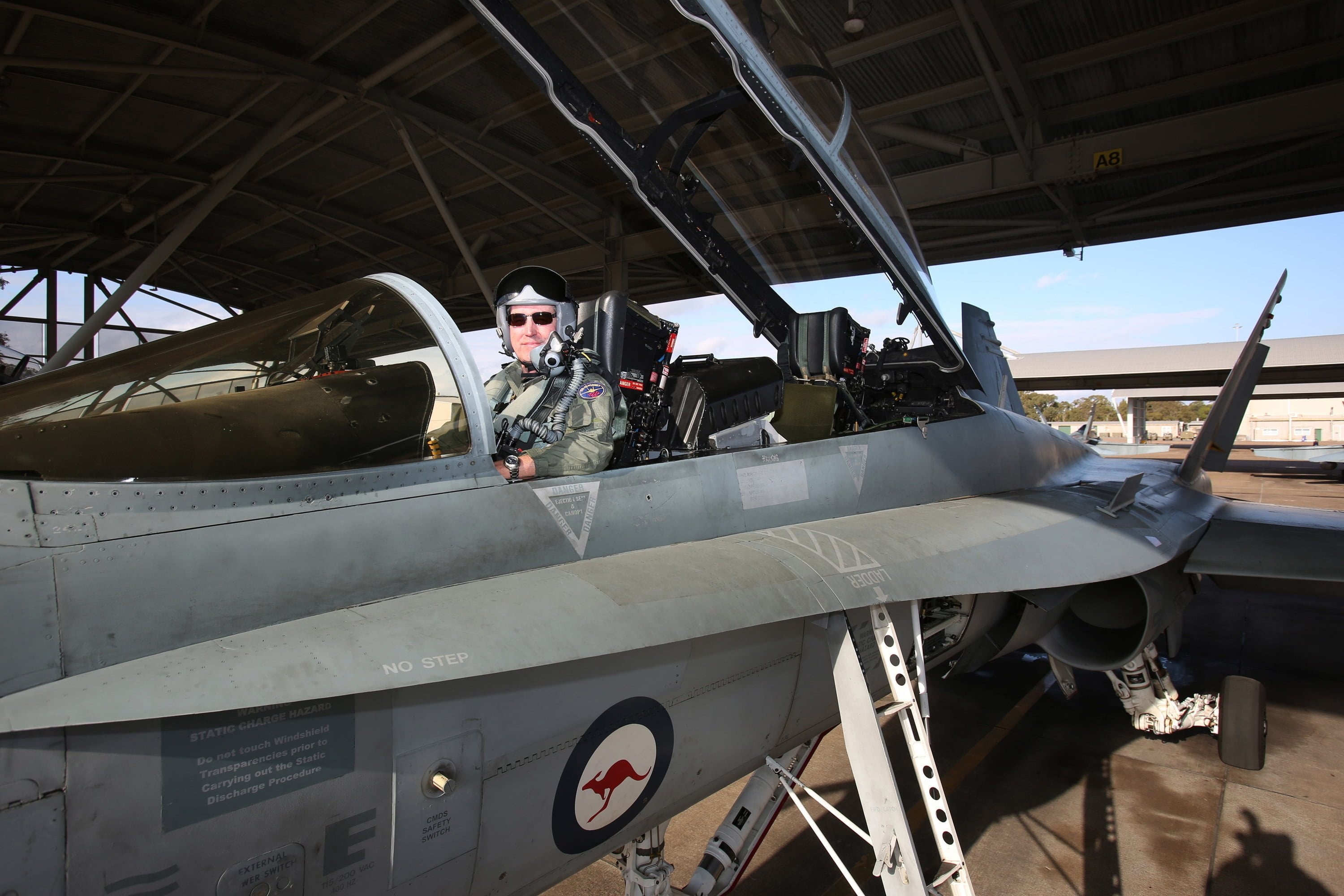2015-09-18 By Robbin Laird
Air Marshal Geoff Brown retired on July 3, 2015 when Leo Davies became the new Air Marshal for the Royal Australian Air Force (RAAF).
Although retired, no one would consider Geoff Brown retiring in any sense of the word.
After having interviewed the current Air Marshal and the two Vice Air Marshals and attended the Plan Jericho workshop held by Williams Foundation, I had a chance to sit down with Brown and look back at his time in the RAAF and forward to the evolving challenges.
The overall perspective Brown provided was that the RAAF had gone through significant change prior to his time as Air Marshal and because the tanker and Wedgetail came into operations during his time as the Chief, change accelerated.
He launched the Plan Jericho and sees the RAAF and the Australian Defense Force in a very good position to innovate as a con-ops driven redesign of the RAAF and with it the transformation of the joint force is underway. He sees the evolving template as the foundation for thinking through any future acquisitions, and the clear need to enhance the ability to acquire to support the new Plan Jericho template.

Question: What started the process of fundamental change in the RAAF?
Air Marshal (Retired) Brown: The key driver was the shortfalls demonstrated in the East Timor operation in 1999 where we succeeded but we clearly did not have the equipment to support a long range effort.
In many respects the C-17 was our first global platform and allowed us to reach places that we could never reach before. With the C-17 we were freed from the limits of our C-130 force. But we’ve always been constrained before by our C130 force as our basic transport. And in my mind one of the transformational capabilities for the Australian air force actually started with the C17.
Question: Your recent deployment to the Middle East has shown as well the shift in capabilities for the RAAF. How do you view that shift?
Air Marshal (Retired) Brown: In 2003, when we went to Iraq it took a long time and we got there only by leveraging USAF assets. This time we had a week to organize and a week later we had self-deployed to the Middle East. The pleasant thing for me was we just did it all with our assets.
Question: As Chief, you were a key player in the decision to bring the F-35 to the RAAF. What do you see that fifth generation brings to the RAAF and the joint force?
Air Marshal (Retired) Brown: The USAF provided the RAAF with a slot for an Australian exchange pilot to fly the F-22, so that gave us direct access to seeing what the initial fifth generation platform brought to air operations.
We have evolved our own capabilities within our classic Hornet force and five years ago added the Super Hornet, all of which has been a significant evolutionary experience.
Fifth generation is not evolutionary; it is about disruptive change.
If you approach it as a step grade improvement you will miss the point of the shift. I flew in a Red Flag in a F-15 D aggressor and after having gotten killed five different times by the F-22s, we went back and looked at the tapes and it was clear that the situational awareness in the two cockpits was night and day different. I will take the F-22 and you can take the F-15 if you want; but I clearly want the new definer of air combat, the fifth generation asset.
And as good as the F-22 is, the F-35 represents a significant shift in fifth gen capability.
And the capability of the fleet to operate in an integrated manner and to share unprecedented data over the MADL system is not just business is usual; it is the baseline for redesigning our 21st century force.
And this clearly triggers a need to shape new concepts of operations in redesigning and integrated sensor enabled force.
Question: As Chief you decided to push your new aircraft – Wedgetail and the KC-30A – out to the force rather than waiting for the long list of tests to be complete.
Why?
Air Marshal (Retired) Brown: Testers can only do so much.
Once an aircraft is functional you need to get in the hand of the operators, pilots, crews and maintainers. They will determine what they think the real priorities for the evolution of the aircraft, rather than a test engineer or pilot.
And you get the benefit of a superior platform from day one.
When I became Deputy Chief of Air Force, the Wedgetail was being slowed down by the Kabuki effort to arrange specification lines for the aircraft. There was much hand-wringing amongst the program staff as to how it didn’t meet the specifications that we had put out.
I said, “Let’s just give it to the operators.”
And the advantage of basically giving the aircraft to the operators was what the test community and the engineers thought were real limitations the operators did not. Sometimes it took the operators two days to figure a work around.
And the real advantage of the development was that they would prioritize what was really needed to be fixed from the operational point of view, not the testing point of view.
In other words, you can spend a lot of time trying to get back to the original specifications.
But when you actually give it to the operators they actually figure out what’s important or what isn’t important and then use the aircraft in real world operations.
KC30A Over Iraq from SldInfo.com on Vimeo.
Question: Clearly, when you launched Plan Jericho, you were focused on tapping into the operational community and unleashing creativity inherent within that community.
Could you discuss your thinking in that regard?
Air Marshal (Retired) Brown: I think the KC-30A operators are a good case in point.
It is about changing what you call the mental furniture.
Here the KC-30A operators were looking at their role in the battlespace and working out new ways to execute the mission rather than the traditional way of flying around in tanker tracks and operating as a flying gas station.
They understand that they were not simply flying gas stations but a key asset in the battlespace enabling the fighters and all air assets for that matter.
The crew looked at their operational situation and determined ways to move closer to those fighter assets and anticipated when the fighters would need to be refueled BEFORE those fighters even asked for fuel.
When I was onboard the KC-30A over Iraq, and saw the operators determine that Marine Corps F-18s engaged over an area of interest, and the tanker crew then determined when they thought the Marines would need fuel and moved closer to them and picked a refueling spot and put out the hoses to get ready to tank the USMC Hornets BEFORE the Marines even had requested refueling.
That is the kind of change which we want to encourage in the RAAF.
The Marines were expecting to need 112,000 pounds of fuel for the mission but because of the repositioning of the tanker, they only needed 84,000 pounds.
You clearly are not always going to operate the tanker that way, but the point is that our tanking crew is involved and integrated into the battlespace and are thinking in terms of dynamic operations, not in any static sense.
The tanker case also shows the impact of flying new systems on maintenance as well, which will require changes in how we think about maintenance modernization and evolution as well. We only need 15 maintainers to maintain the KC-30A in the Middle East operations.
Question: You have argued as well for significant change in the acquisition process to empower the kind of transformation envisaged in Plan Jericho.
How would you describe those changes?
Air Marshal (Retired) Brown: We still are following industrial age acquisition processes whereby we generate a 10 year map with a long list of requirements and then put out an RFP which then puts that map and requirements into concrete.
The information age does not work like that.
We can identify the direction we want to go, and buy an initial platform to engage in the journey.
But technology is evolving so fast, and the input from operators is so important, we need to build modernization approaches which encompass the fleet and then allow for discrete evolutions of the core platforms.
I find the analogy that I think is such a powerful one for the F35 is that somebody’s giving you an iPhone, and yet you ignore the ecosystem. The iPhone in itself while it’s a spectacular device is so because of its ability to tap into the evolving ecosystem.
The F-35 is clearly like this in character in tapping into and generating a 21st century combat eco system; it is not about the plane being incomplete; it will always evolve in interaction with the ecosystem, and that is what Plan Jericho is all about.
Who knows where we’ll end up with the F-35 fleet and what its really capable of until we work through its interactive modernization with the other key pieces in our transforming combat capability.

With regard to thinking about future dynamics, we discussed two cases. The first involved how he saw the Super Hornet/Growler fleet evolving in the period ahead and the second is the possible acquisition of a long range strike/ISR aircraft.
With regard to Super Hornet and Growler, Brown highlighted the potential use of the aircraft as the unmanned aircraft evolves.
“With regard to the Growler, it is not about flying with the F-35 as far as the Growler is concerned, for the F-35 clearly does not need it; but the Growler can be and will be used in many other situations. Also a two seat aircraft has the advantage of being able to evolve it’s roles to take far more advantage of second seat.
We do not need pricey UAVs, which look like manned aircraft; we need cheap expendable assets. And the Super Hornet as a two seat aircraft can evolve into a good asset to launch and control such assets, or to command assets launched by other aircraft as well.”
And if the USAF can shape a cost effective long range strike platform, particularly one which is modular so that it can be cost contained and configured for Australian needs and the area of interest for Australia.
“Clearly, the USAF innovations in long range strike and ISR are of clear interest to us, and we can build on our F-111 experience. Range in the Pacific area is critical to successful air operations. A long range strike asset is something we might well want to add to our core capability, notably with the F-35 sensor enabled and data rich belt available to it.”
To download a copy of the Plan Jericho report on the RAAF approach to transformation published by The Williams Foundation, please go here:
http://www.williamsfoundation.org.au/News/3527146


